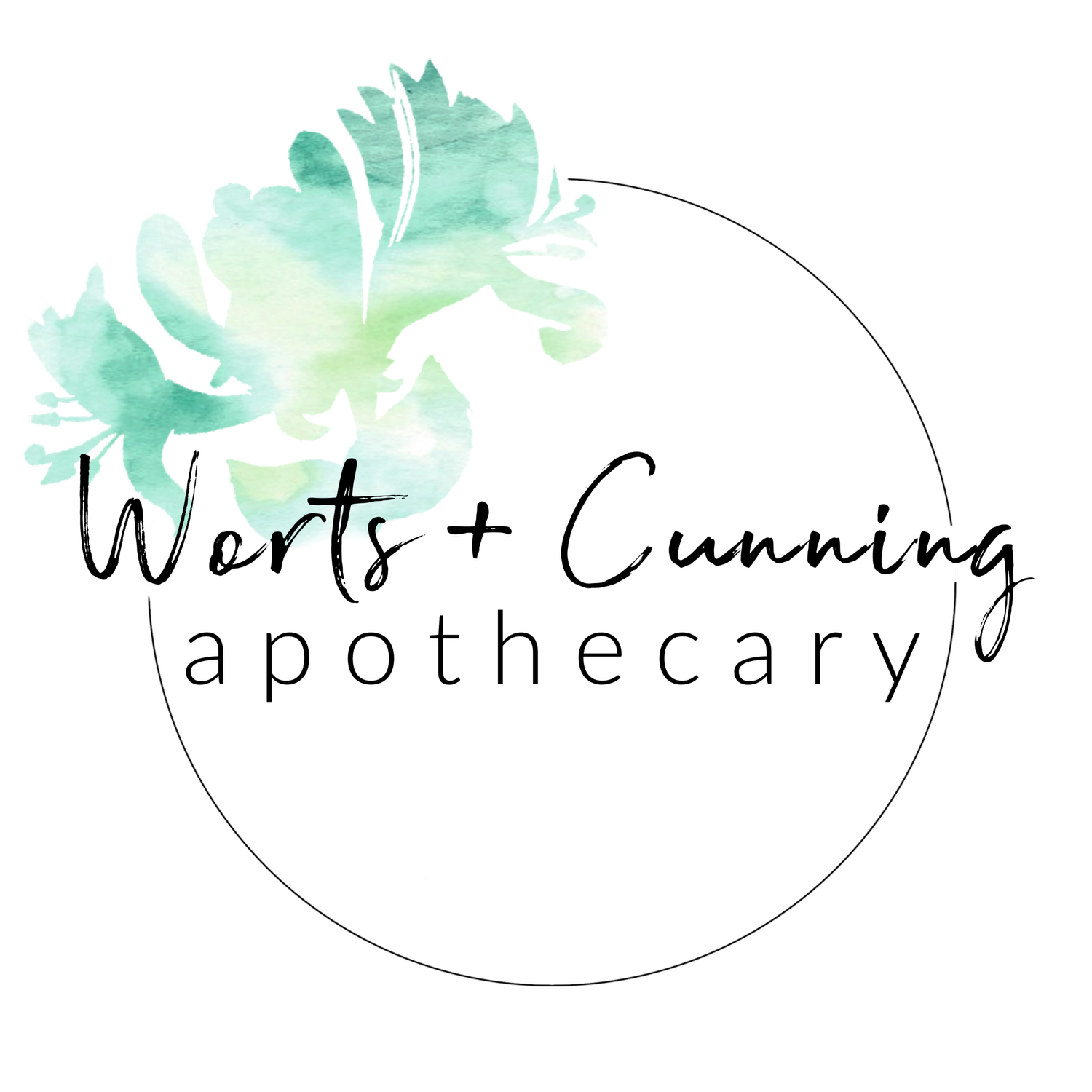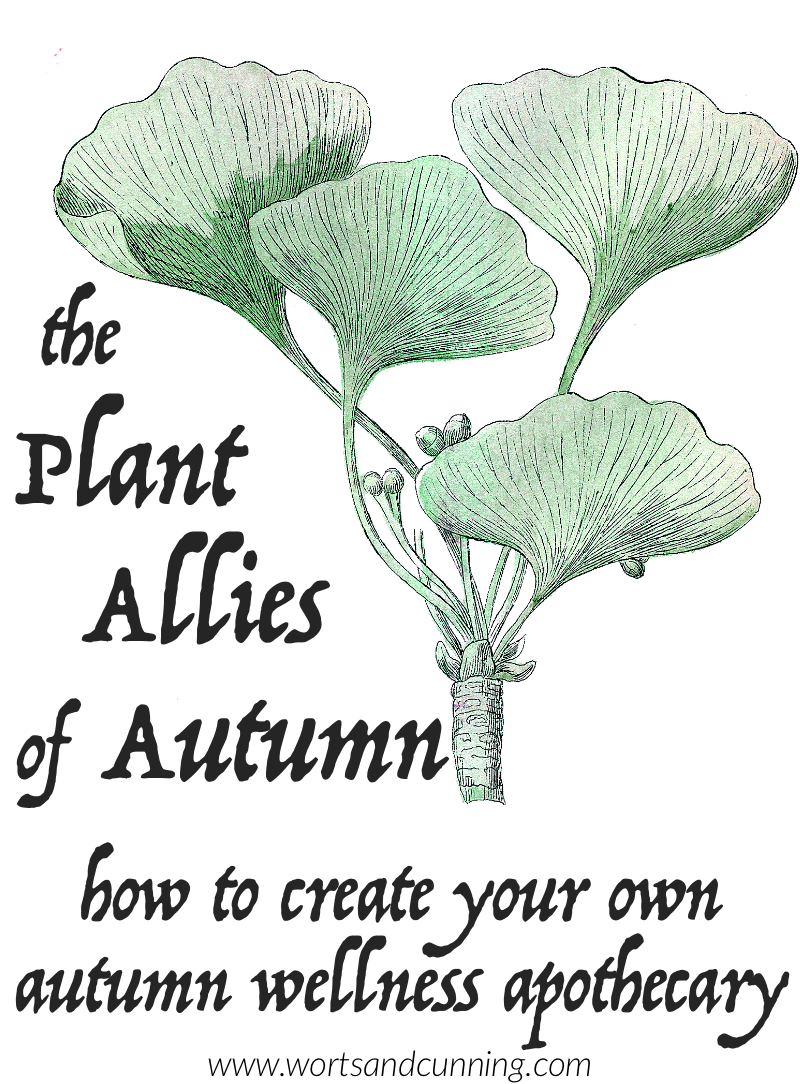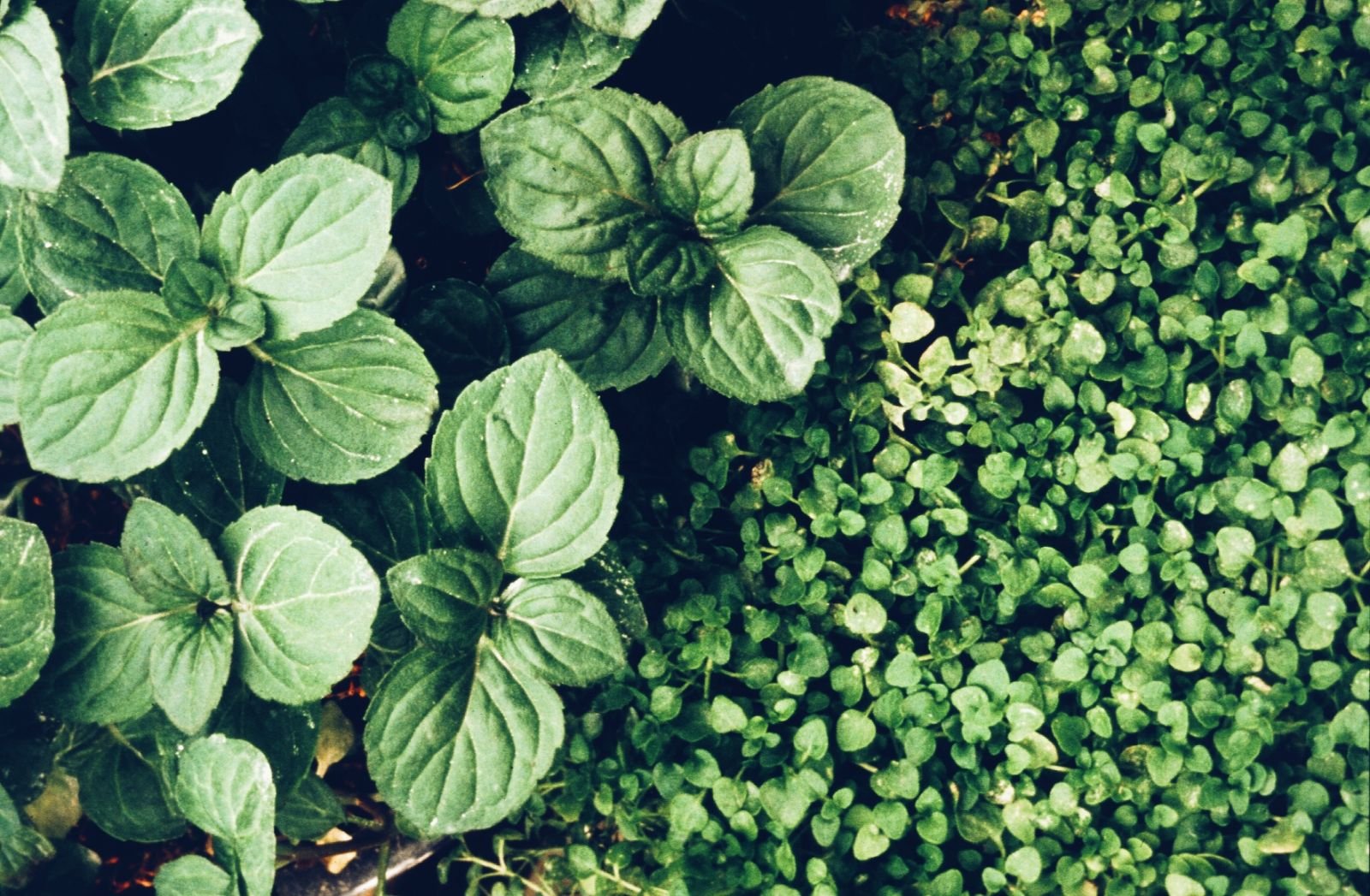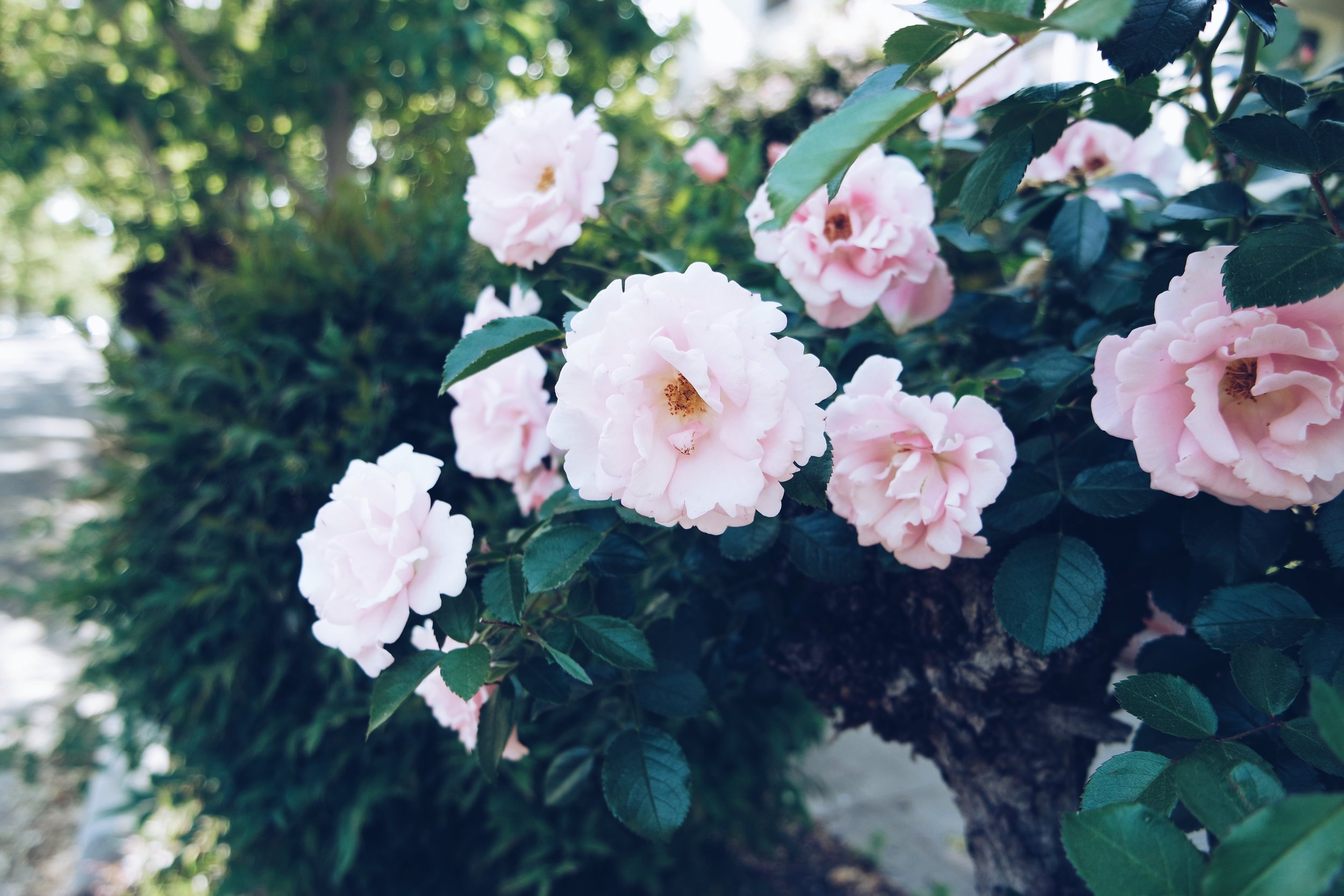The Plant Allies of Autumn: How to Create an Autumn Wellness Apothecary
In the final post of my seasonal wellness apothecary series, it's time to explore the healing needs that often appear when autumn arrives. The heat of summer gives way to the cooler days and nights of fall, where the wheel of the year turns ever deeper into the dark. Autumn can mark a time of increased exposure to germs (often through returning to school or work after break), but some simple preparations can prevent a great deal of discomfort.
As with my winter, spring, and summer apothecary posts, I've organized my recommendation by herbal actions such as bronchodilators for asthma that intensifies at the change of seasons. As always, I've tried to highlight herbs that are easy to access (especially in North America, where I am writing this from) and/or inexpensive to grow yourself, but hopefully you'll feel inspired and able to work with herbs local to your area. While I've linked to full plant profiles throughout this post, you'll find full, printable profiles of nearly every herb featured in my apothecary series available in The Plant Ally Library.
Ready for some autumn healing? Let's explore some of the common ailments and the plant allies we can connect to during the season of fall.
Ready For What Lies Ahead: Cultivating wisdom and supporting brain health
Herbal Actions: Nootropics, nervines, and adaptogens.
While I have written about brain tonics in my spring apothecary post, I wanted to mention a few more that I particularly like working with during the autumn and growing winter of the year.
Gingko (Gingko biloba): A great ally for brain health in general, but especially for older folks. Within Ayurvedic tradition Gingko is considered a rasayana or restorative tonic for the mind. (1) It is a helpful remedy for brain fog, poor memory, and the anxiety that can accompany both. I like working with Gingko as an ancestor plant as it is an ancient tree that has been on this planet for nearly 300 million years, making it a particularly potent ally to work with during the season of harvest and ancestors.
Peppermint (Mentha piperita): Another brain tonic that I turn to during the autumn and winter is Peppermint. I love this easy-to-grow, distinctively scented plant ally for its ability to wake up the senses and stimulate focus. As someone who doesn't use a lot of stimulating herbs in their personal practice, I like the Peppermint is energizing while still being grounding, which is the perfect blend for when I need to focus on a project.
Other brain tonic plant allies to consider are Milky Oat (Avena sativa) when there is brain fog due to nervous system exhaustion, Sage (Salvia spp.), Rosemary (Salvia rosmarinus), and Skullcap (Scutellaria lateriflora).
Tending the Soul Shrine: Supporting the health and beauty of our skin
Herbal Actions: Vulneraries, astringents, and nervines.
While I've already written about more first-aid and post-sun exposure treatments in my summer apothecary post, the following plant allies are generally supportive of skin health and radiance, helping to cocoon our skin in healing remedies as the weather turns cooler.
Rose (Rosa spp.): My absolute favorite skin for skin wellness and radiance, I love using Rose in all of its forms. Rose hydrosol is a wonderful way to clean and tone the skin, while Rose Hip oil is a rich serum to help the skin glow as well as being useful for conditions like acne and discoloration from sun exposure. I meditate with Rose, one of our ancient plant allies similar to Gingko (Gingko biloba) and use their flower essence to help me with issues of the heart. I drink Rose tea in celebration of Venusian energy in my life and to tend to the needs of my soul shrine. The simplicity of using one plant for most of my skincare is one of the ways that I take care of myself best - keeping anything that I need to do on a daily basis simple and nourishing.
Calendula (Calendula officinalis): While I've mentioned a number of Calendula's healing gifts in my spring apothecary post, they are one of my favorite end of summer, start of autumn herbal oils to use on my skin. Using Calendula herbal oil during this time of year, that I've made myself from my spring harvest of flowers, feels like infusing my skin with the last bit of summer's heat before I welcome in the much anticipated coolness of autumn and cold of winter. It is a great plant ally in all its forms (herbal oil, flower for tea, and flower essence) for those who struggle with sadness at the change of the seasons from the light to the dark half of the year.
Herbs like Chamomile (Matricaria recutita), Sacred Basil (Ocimum sanctum), Lavender (Lavandula spp.), and Turmeric (Curcuma longa) are also great allies of the skin.
Damp and Dust and Runny Noses: Addressing autumn season allergies
For recommendations on plant allies for allergies see my spring apothecary post.
Autumn Winds and Deep Breaths: Supporting the respiratory system and relieving the symptoms of asthma
Herbal Actions: Bronchodilators, antispasmodics, anti-inflammatories, antitussives, and nervous system tonics.
Cramp Bark (Viburnum opulus): A great bronchodilator and antispasmodic that's not only useful for asthma but for coughs in general. The herb also has relaxing nervine qualities that address the stress and anxiety that often accompanies an asthma attack.
Lobelia (Lobelia inflata): Lobelia is a classic herb for interrupting an asthma attack in its tracks but it needs to be used with care and ideally under practitioner guidance. It is an herb that should be used in small doses (10 - 20 drops) as large doses can induce vomiting, but it can be very effective in stopping an asthma attack that has already started.
Hawthorn (Crataegus monogyna): Hawthorn is a great daily tonic for folks with asthma, especially asthma that is accompanied by heart palpitations and triggered by general stress. The herb helps to regulate heart rhythm and is a wonderful nervous system tonic which aids us in reducing stress.
Hyssop (Hyssopus officinalis): An overall good ally for asthma and respiratory conditions that are aggravated by the colder weather. Hyssop brings warmth and dryness to the often cold and moist conditions of the common cold, influenza, and other seasonal complaints. Coldness in the chest is an indication for Hyssop as well as a general slowing of the senses and weakness in the extremities. Hyssop is also a great ally for breathwork, helping us expand our capacity to take a deep breath.
Other herbs to keep around for supporting the health of someone with asthma are Elecampane (Inula helenium), Mullein (Verbascum thapsus), Skullcap (Scutellaria lateriflora), and Plantain (Plantago spp.), which is especially useful for fire season.
An Ounce of Prevention: Preventing cold and flu
Herbal Actions: Immunomodulators, anti-inflammatories, and nervines.
As the saying goes, "An ounce of prevention is worth a pound of cure." A lot of herbal medicine is focused on preventative measures and the ways that we can incorporate healing plants into our daily life. While I've already discussed prevention for the common cold and the flu in my winter apothecary post, I'd thought I'd highlight my favorite preventative plants here, too.
Milky Oat (Avena sativa): As stress is the underlying reason for much of disease and discomfort, having a friendly nervine (i.e. nervous system tonic) like Milky Oat that you work with on a regular basis can prevent a lot of illness in the long run. Milky Oat is my favorite nervine because it is a gentle but sturdy medicine that helps the body become resilient and it can be used by most people for an extended period of time.
Elder (Sambucus nigra): As summer ends and autumn begins, I pull out a bottle of Elderberry syrup and the whole family starts taking a daily dose of this purple potion. Elder helps to prevent colds and influenza but also helps to shorten the duration of both if you happen to catch either. Thank Goddess for the tree of medicine!
Shatavari (Asparagus racemosa): A highly valued restorative tonic within Ayurvedic tradition, Shatavari is a panacea type of herb, seemingly addressing all that would ail someone. Similar to Milky Oat as a nervine, Shatavari also helps to improve immunity and prevent infection in addition to promoting overall health. It's a great ally to have available all year round, but especially during the start of cold and flu season.
You can read about other preventative plant allies and remedies for cold and flu season in my winter apothecary post.
Rain is Coming: Managing arthritis and other chronic pain
Herbal Actions: Anti-inflammatories, analgesics, and digestives/stomachics.
Whether arthritis or dealing with an old injury, sometimes when the weather changes to a cooler and damp season there can be an increase in discomfort and pain (i.e. that one person who always knows when it's about to rain because their hip hurts). The following plants provide much needed pain relief to help you enjoy sweater weather better.
Meadowsweet (Filipendula ulmaria): Meadowsweet is a powerful clearer of heat from the body whether in the form of arthritic inflammation, fever, heartburn or other overheated conditions. Often issues of inflammation extend to the digestive tract which is why herbs like Meadowsweet are so valuable in relieving arthritis as the plant is anti-inflammatory and a classic stomachic. English herbalist Thomas Bartram advises the use of Meadowsweet so that whatever other herbs are recommended that the plant will "have a beneficial effect upon the stomach and intestines to ensure proper absorption of active ingredients." (2)
Turmeric (Curcuma longa): Haldi doodh or golden milk as it is more often known in English, is my favorite daily anti-inflammatory remedy, and Turmeric (Haldi हल्दी in Hindi) is the main ingredient. When making or purchasing Turmeric for its anti-inflammatory qualities you want to make sure to get a variety high in curcumin which is the component of Turmeric that makes it such a beautiful anti-inflammatory ally. (3) You'll also want to mix in Black Pepper (Piper nigrum) to your blend so that the curcumin becomes more bioavailable for your body to absorb (and the piperin in Black Pepper is also anti-inflammatory). In addition to enjoying Turmeric as an internal treatment it makes a great topical compress as well.
Ashwagandha (Withania somnifera): Not only my favorite topical treatment for many forms of arthritis, I love Ashwagandha for all sorts of pain. It's great in oil form (herbal oil not essential oil) for post-workout recovery or recovering from acute injury. You can also take it internally to help with inflammation and I recommend making a Moon milk with it which is a evening treat of mixing ½ to 1 teaspoon of Ashwagandha powder with your preferred variety of milk and a sweetener of choice (a bit of Cinnamomum can be a nice addition). You can learn more about all the ways I love Ashwagandha in The Plant Ally Library.
Other anti-inflammatory herbs that can be useful for arthritis include White Willow Bark (Salix alba), Borage (Borago officinalis), Ginger (Zingiber officinalis), Elecampane (Inula helenium), and Nettles (Urtica dioica).
The Growing Shadow: Alleviating the symptoms of seasonal sadness
Herbal Actions: Nervines, antidepressants, and anxiolytics.
While feeling melancholic from time to time and even when the seasons change from the bright half to the dark half of the year is a normal part of living, when you're experiencing persistent sadness and depression during autumn and winter it's time to seek out support. While I've listed some plants that can be allies for those who are affected by seasonal sadness they are meant to be used alongside other healing modalities like therapy, bodywork, and other forms of medicine. Hopefully, as plants are prone to do when we open up to their wisdom, they'll guide you to the places and spaces you need to be in order to find wellness throughout the year.
One of the styles of remedies that I recommend for folks seeking to alleviate their seasonal depression are remedies that cultivate a sense of comfort. What a comforting remedy is will be different for everyone, but for me, a warm glass of (oat) milk blended with powdered herbs and spices is one of the most comforting remedies I can think of. For many folks with any sort of Indo-European ancestry, there is probably some experience with or at least knowledge of milk-based remedies as deeply comforting and healing (probably stemming from ancient and ongoing veneration of cows and dreams of lands of milk and honey). You might find your comforting remedy in childhood memories (i.e. the scent of Peppermint always makes you feel taken care of because of the menthol rubs you would receive as a child to help you get over a chest cold) or in ancestral and/or cultural traditions that may or may not have been passed down to you. Becoming curious in general, about your comfort or anything else that piques your interest, is one of the ways to guard against and alleviate some of the discomfort of seasonal sadness, so I encourage you to give it a try.
Ashwagandha (Withania somnifera): As the evenings grow cold, I love preparing a warm cup of Ashwagandha milk before bed. Ashwagandha is a nervous system restorative which means that it helps to repair an exhausted, overwhelmed, and overworked nervous system. It's a lovely ally to work with over an extended period of time and a good option if you find other adaptogenic herbs to be too overstimulating to your system.
Milky Oat (Avena sativa): Do I recommend Milky Oats a lot? Sure do and for good reason. The roots of so many health imbalances is stress and Milky Oat is one of our most prized nervous system tonics in traditional western herbalists, earning it the nickname of "soul milk" amongst some herbalists (myself included). While there is a growing knowledge about seasonal affective disorders, including the important connection between Vitamin D and SAD, as well as genetic dispositions, I've observed a connection between chronic burnout (or a previous period of intense burnout that was never fully recovered from) and seasonal waves of sadness. Working with a nervine like Milky Oat can bring in the reparative and burnout recovery energy that the nervous system needs and possibly help with seasonal sadness in turn. But again, it's important to work one-on-one with health care practitioners who can really support your individual needs around seasonal sadness and depression.
Sacred Basil (Ocimum sanctum): A sturdy friend during hard times, Sacred Basil is a well-loved restorative herb within Ayurvedic tradition, helping to uplift the spirit, relieve anxiety, and ease depression. They harmonize well with Ashwagandha.
Other herbs to consider are Lemon Balm (Melissa officinalis), Motherwort (Leonurus cardiaca), Mugwort (Artermisia vulgaris), St. Joan's Wort (Hypericum perforatum), Peppermint (Mentha piperita), and Vervain (Verbena spp.).
🍁
Friends, I hope you enjoyed reading about some of my favorite plant allies for the autumn months. Be sure to check out the rest of the series on creating seasonal wellness apothecaries. I’ve made sure to link to all of the plant profiles available in my community blog (what you’re reading right now), but if you’d like to gain access to my whole collection of plant profiles, come this way.
One of my favorite ways to prepare herbal medicine during the cooler months is by preparing herbal baths. I also find myself drawn to the joy of using the flower essences I’ve made over the summer.
May your autumn be cozy and full of magick!
This post was made possible through patron support.
❤ Thanks, friends. ❤
Footnotes
(1) Anne McIntyre, Dispensing with Tradition: A Practitioner's Guide to using Indian and Western Herbs the Ayurvedic Way (Cheltenham: Artemis House, 2012), 68.
(2) Thomas Bartram, Bartram's Encyclopedia of Herbal Medicine (London: Constable & Robinson Ltd, 1998), 37.
(3) I purchase a lot of my spices, including Turmeric, through Diaspora Co. because a) their spices are amazing and b) their ethics are amazing, too. They have a Turmeric that is high in curcumin and it does help to make anti-inflammatory treatments more effective.
















